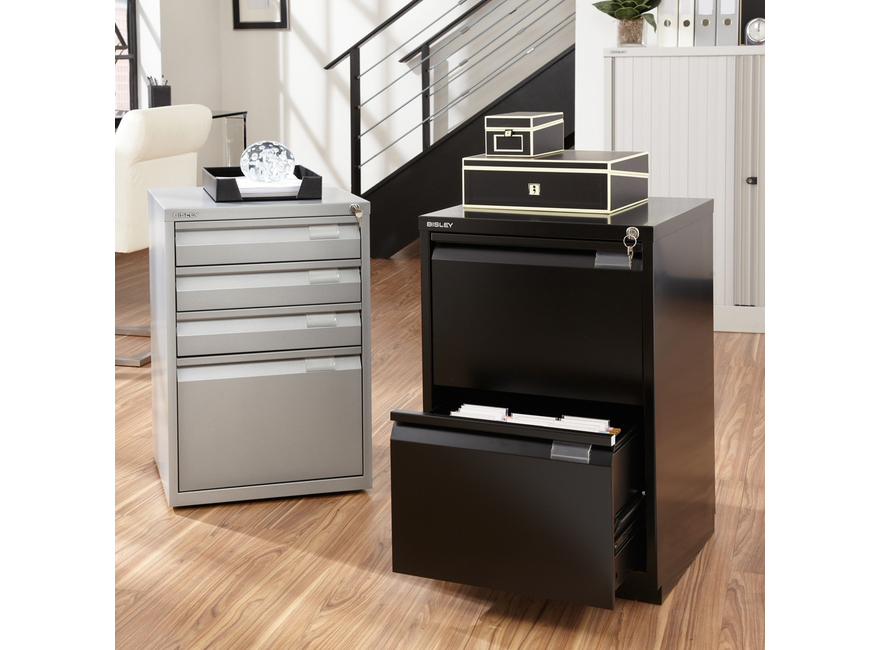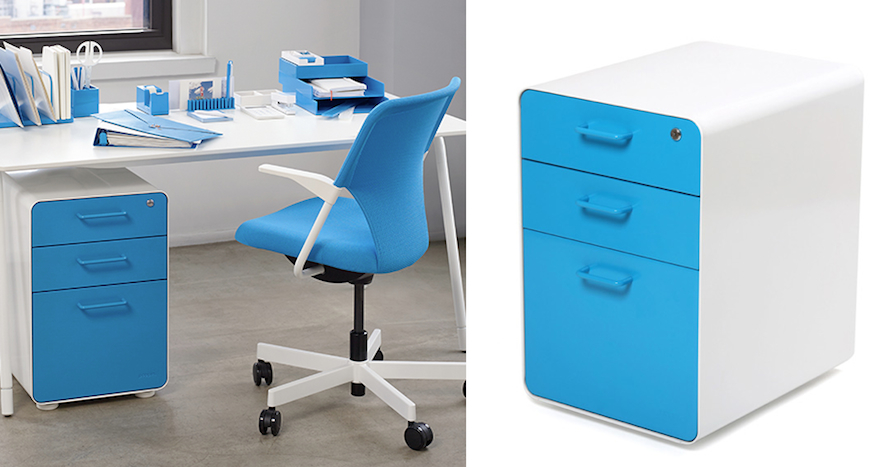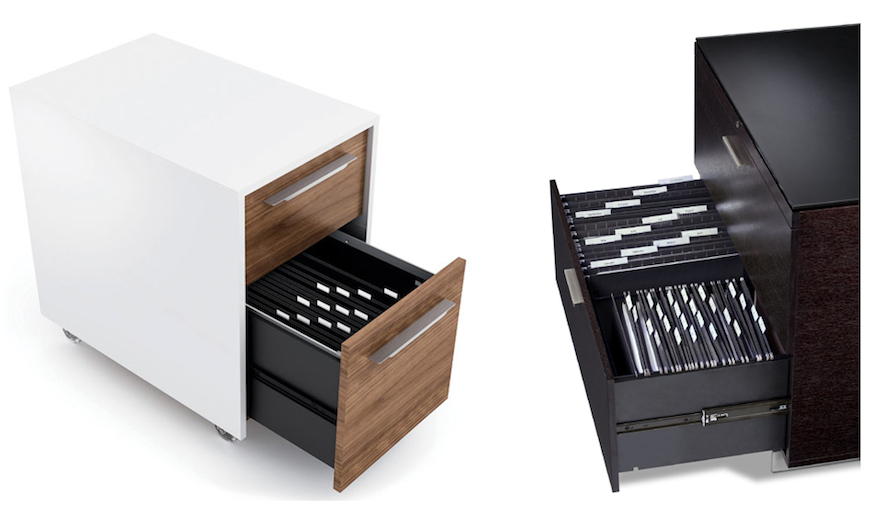Designing for Filing

While moving toward a paperless world is a great idea, the reality (as I see in my clients homes and offices) is that people still have lots of paper they're keeping—and that paper needs to get filed away. And my experience has also made me very aware of some issues related to file cabinet design.
One of the first decisions for an end-user is whether to use a lateral file (such as the one above, made by HON) or a vertical file. Space constraints matter here, since lateral files take more wall space, but don't extend as far into the room.
And while you can't see it, this file cabinet has a lot of other design features worth noting. There are four adjustable leveling glides—always nice for less-than-totally-even floors. To prevent tipping, there's an interlock system to keep the end-user from pulling out more than one drawer at a time; there are also counterweights, where needed, to prevent tipping when drawers are open. Since I've had clients' file cabinets tip over when one or more drawers were open, these features definitely catch my attention. My only caution: One of my own file cabinets (not a HON) had an interlock system that jammed and was somewhat of a pain to reset; these need to be well-designed to prevent such problems.

A lateral file can also be configured to hold files facing the front, rather than the side, as you can see with this Asisto cabinet from C+P.

These lateral files from Herman Miller are modular—always nice for meeting changing needs. And for certain shared workspaces, the ability to have some drawers open in one direction and some in another could be quite useful.

Another basic decision for the end-user is how large a cabinet is needed—and, especially with lateral files that are pedestal height, whether to have two file drawers or one file drawer and other, smaller drawers for desk supplies.
Another critical design feature is whether or not the drawers are full extension—drawers that pull all the way out, so that knuckles aren't scraped trying to reach files in the back. The ones above, from Bisley, do indeed have full-extension drawers. For pedestals, having the option to add casters is also useful.

Poppin provides a nice variation on the pedestal file cabinet, with the rounded edges. This means there are no sharp corners to run into, and this is a design feature that feng shui followers will appreciate.

Yomei's pedestal file cabinet, called the Fold, has a top shelf that folds out to provide a larger work area—a clever way to provide more temporary workspace in a space-constrained office.

Both file pedestals and lateral file cabinets, such as these from BDI, can be designed to hold either letter-sized files or legal-sized files (or both, on some lateral file cabinets) depending on the orientation of the hanger rails. Alternatively, the end-user can choose file cabinets specifically designed for one size or the other.
Note: Whenever the hanging files rest (in full or in part) on a frame rather than on the edges of the drawer, it's essential that the frame be strong enough to hold a drawer's worth of loaded files. I've seen way too many file drawer frames that collapse under the weight of the files.

This follower block is one of the nice details in the vertical files from GLOBALContract. A follower block is critical if the end-user is using non-hanging files, as recommended by David Allen's Getting Things Done—a productivity/time management approach with many devoted fans.

Keys are another design consideration. Sometimes it's easiest for the end-user to have one key lock the entire cabinet; in other situations, the end-user only needs to lock one drawer, not the whole cabinet, and it's nice to have that option. And then, sometimes, it's nice to be able to key multiple file cabinets to use a single key, which is what you can do with HON's "One Key" interchangeable core removable locks.

Fire-resistent filing cabinets, such as this one from FireKing, are worth considering for businesses that would be in serious trouble if all their files were destroyed.

A traditional file cabinet isn't the best design for all end-users. For those who work best when all of their files are visible, a file cart might be a better answer. This file cart from Safco has a locking top, so there's still some security for the files.

Another alternative to a file cabinet would be file boxes. These get awkward to use if they are stacked—it's hard to get to anything except the top box—but a single box or non-stacked arrangements could work fine.

And in a number of situations, aesthetics matter—and a standard metal file cabinet may not be the right answer. Some of the cabinets already mentioned might be appealing, as might a wood file cabinet. And there are also some more unusual filing solutions, such as this file box from Horchow.
-
oFavorite This
-
QComment
K
{Welcome
Create a Core77 Account
Already have an account? Sign In
By creating a Core77 account you confirm that you accept the Terms of Use
K
Reset Password
Please enter your email and we will send an email to reset your password.

